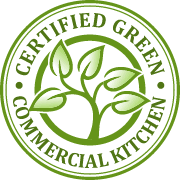Green certifications, also known as eco-labels, control if a product meets specific standards concerning the environment. Each green certification has its own criteria, therefore it is very difficult for customers to know exactly what the trademark and symbols stand for. Another stumbling block is that a green certification does not provide any information about a product’s sustainability or quality. It is advisable to look beyond those certifications when evaluating the environmental impact of a product.
Nowadays manufacturers often use green certifications because they understand that green is the new gold and therefore they put the emphasis on the greenness of their product, which causes us to question whether environmental claims are actually true. This phenomenon is called ‘greenwashing’. Customers have to watch out for the ‘little green lies’, like the phrase “environmentally friendly”.
Some specifications
There are three different types of certifications. The first one is ‘single-attribute certification’ and it has only one criterion: emissions or energy consumption. The second is ‘multiple-attribute certification’. Those products have several characteristics. The last type of certification is the ‘life cycle-based certification’.
There are three different types of certifications. The first one is ‘single-attribute certification’ and it has only one criterion: emissions or energy consumption. The second is ‘multiple-attribute certification’. Those products have several characteristics. The last type of certification is the ‘life cycle-based certification’.
There are three norms which every standard must meet. The standard should be open and transparent so purchasers know what the specific criteria stand for. It should also be objective and should have a strong foundation of environmental science. The standard should be stringent enough so that only the best products can acquire the certification. (Source)
Ellen De Medts

Geen opmerkingen:
Een reactie posten